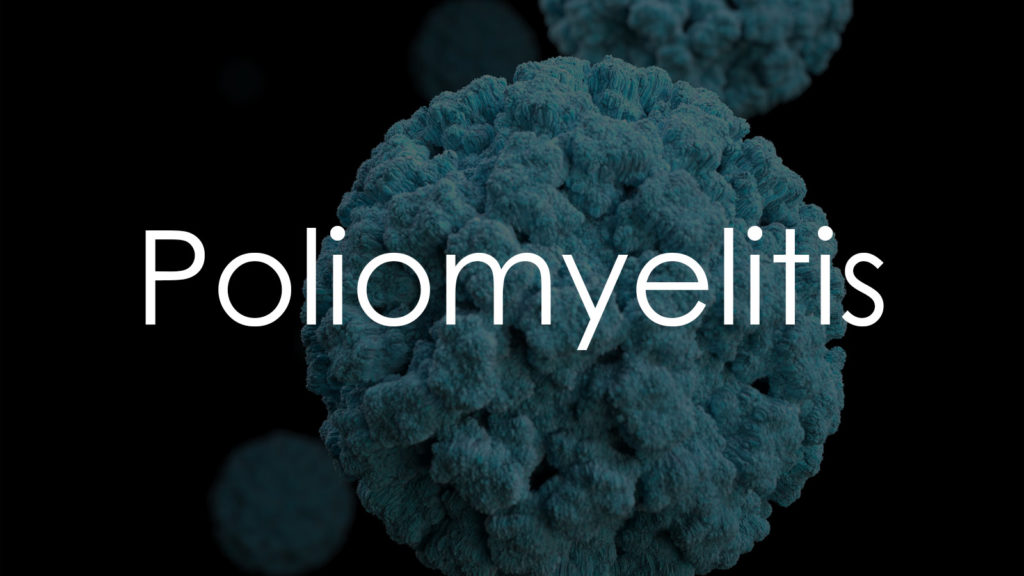Treatment of poliomyelitis, commonly known as polio, involves various strategies to alleviate symptoms, prevent complications, and support recovery. While there is no cure for polio, effective management and supportive care are crucial for improving patient outcomes.

Symptomatic Treatment
Pain and Fever Management
Over-the-Counter Pain Relievers
Pain and fever can be managed with over-the-counter medications, such as those referring to nonsteroidal anti-inflammatory drugs. These medications help reduce pain, inflammation, and fever associated with polio.
Dosage and Administration
It’s important to follow the recommended dosages and consult with a healthcare provider to ensure safe use, especially for children.
Hydration
Fluid Intake
Maintaining proper hydration is essential, especially if symptoms include fever, nausea, or vomiting. Drinking plenty of fluids such as water, oral rehydration solutions, and clear broths can prevent dehydration.
Monitoring Hydration Levels
Caregivers should monitor for signs of dehydration, such as dry mouth, reduced urine output, and lethargy, and ensure prompt rehydration if necessary.
Respiratory Support
Breathing Assistance
Mechanical Ventilation
In severe cases of bulbar poliomyelitis, where respiratory muscles are affected, mechanical ventilation may be required to assist with breathing. This can involve non-invasive ventilation or more advanced techniques such as intubation and use of a ventilator.
Monitoring and Maintenance
Regular monitoring and maintenance of respiratory function are crucial for patients requiring mechanical ventilation to prevent complications and ensure adequate oxygenation.
Airway Clearance
Suctioning
Patients with difficulty clearing secretions may require suctioning to maintain airway patency and prevent respiratory infections.
Physiotherapy
Respiratory physiotherapy techniques, such as chest physiotherapy and postural drainage, can help improve lung function and facilitate the clearance of respiratory secretions.
Physical Therapy and Rehabilitation
Muscle Strengthening
Physical Therapy
Physical therapy is a cornerstone of polio treatment, focusing on muscle strengthening and improving mobility. Therapists use exercises tailored to the patient’s specific needs to enhance muscle function and prevent contractures.
Range of Motion Exercises
Range of motion exercises are important to maintain joint flexibility and prevent stiffness. These exercises help patients retain as much mobility as possible.
Orthopedic Devices
Braces and Splints
Braces and splints can support weakened limbs, improve mobility, and prevent deformities. These devices are custom-fitted to ensure proper support and comfort.
Assistive Devices
Assistive devices, such as crutches, walkers, and wheelchairs, can enhance mobility and independence for individuals with significant muscle weakness or paralysis.
Occupational Therapy
Daily Living Skills
Adaptive Techniques
Occupational therapy focuses on helping patients develop adaptive techniques for daily living activities, such as dressing, eating, and personal hygiene.
Home Modifications
Therapists may recommend home modifications, such as installing grab bars and ramps, to create a safer and more accessible living environment.
Work and School Integration
Vocational Training
Vocational training can help individuals with polio develop skills to participate in the workforce, promoting independence and self-sufficiency.
Educational Support
For children affected by polio, educational support and accommodations may be necessary to facilitate their return to school and ensure academic success.
Nutritional Support
Balanced Diet
Importance of Nutrition
A balanced diet is essential for overall health and recovery from polio. Proper nutrition supports the immune system, promotes healing, and provides the energy needed for rehabilitation.
Dietary Recommendations
A diet rich in fruits, vegetables, lean proteins, and whole grains is recommended. Patients should avoid processed foods and excessive sugar, which can negatively impact health.
Nutritional Supplements
Vitamins and Minerals
Nutritional supplements, including vitamins and minerals, may be necessary to address deficiencies and support recovery. Vitamin D and calcium are particularly important for bone health and muscle function.
Consulting a Nutritionist
Consulting a nutritionist can help develop a personalized nutrition plan that meets the specific needs of polio patients, ensuring they receive adequate nutrients for recovery.
Prevention of Complications
Monitoring and Early Intervention
Regular Medical Check-Ups
Regular medical check-ups are crucial for monitoring the patient’s condition, detecting complications early, and adjusting the treatment plan as needed.
Preventive Measures
Preventive measures, such as vaccinations and hygiene practices, are essential to protect polio patients from secondary infections and other health issues.
Managing Post-Polio Syndrome (PPS)
Symptom Management
Post-Polio Syndrome (PPS) can occur years after the initial polio infection, causing new muscle weakness, fatigue, and pain. Managing PPS involves a combination of physical therapy, pain management, and lifestyle modifications to improve quality of life.
Support Groups
Support groups and counseling can provide emotional support and practical advice for individuals dealing with PPS, helping them cope with the challenges of the condition.
Psychological Support
Coping with Disability
Mental Health Services
Coping with the physical and emotional challenges of polio can be difficult. Mental health services, including counseling and therapy, can help patients and their families manage stress, anxiety, and depression.
Support Networks
Building a strong support network of family, friends, and healthcare professionals can provide essential emotional and practical support for individuals affected by polio.
Vaccination and Prevention
Importance of Vaccination
Polio Vaccines
Polio vaccines are the most effective way to prevent poliomyelitis. Ensuring that children receive the recommended doses of the polio vaccine according to the immunization schedule is crucial for immunity.
Booster Shots
Booster shots may be recommended for adults, particularly during polio outbreaks or for individuals traveling to areas where polio is still prevalent.
Community Immunity
Herd Immunity
High vaccination rates within a community help achieve herd immunity, reducing the overall prevalence of polio and protecting those who are unable to be vaccinated.
Public Health Measures
Public health measures, such as promoting vaccination and educating the public about polio prevention, play a vital role in controlling the spread of the virus.
Conclusion
Effective treatment of poliomyelitis involves a combination of symptomatic relief, physical and occupational therapy, respiratory support, nutritional management, and psychological support. By following medical advice, maintaining good hygiene practices, and ensuring vaccination, individuals can recover from polio and help prevent its spread. Early diagnosis and prompt treatment are key to managing symptoms, reducing the risk of severe complications, and improving overall health outcomes.